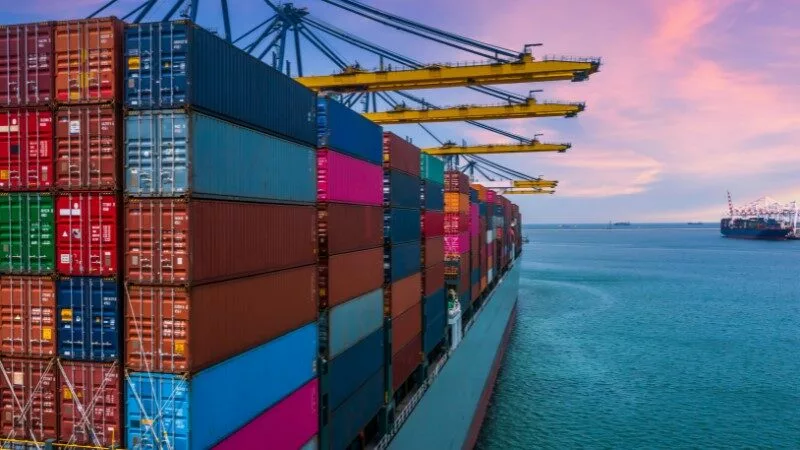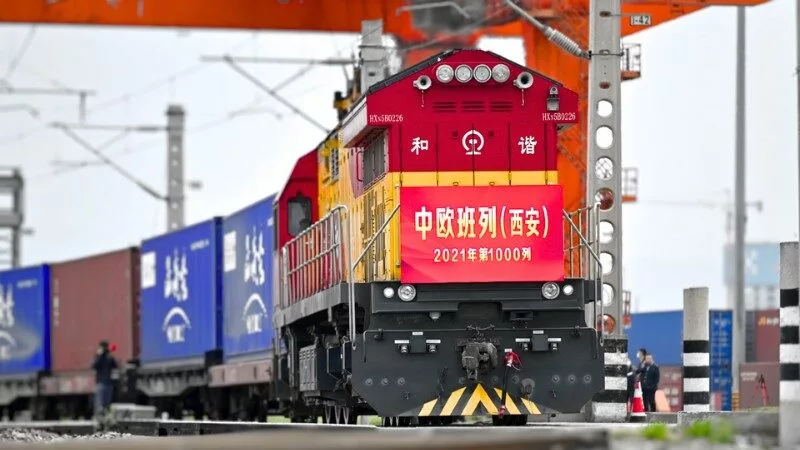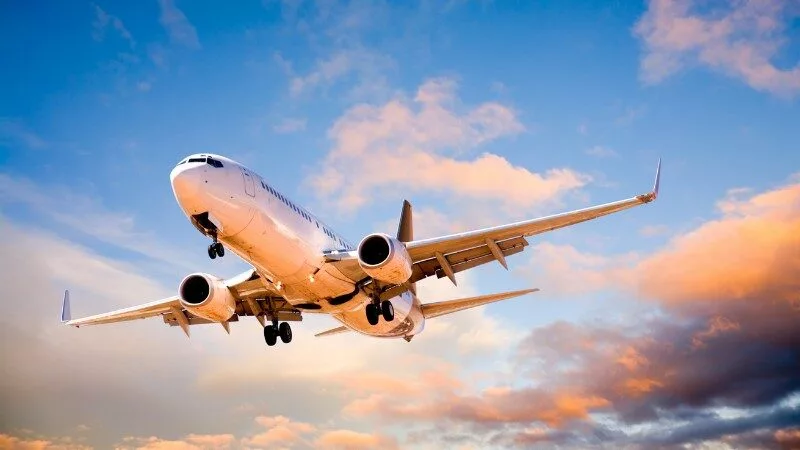Shipping goods from China to Italy can be an important aspect of international trade for many businesses. In the global market, knowing the best transportation methods and understanding the process for shipping between these two countries is crucial for a successful business relationship.
Selecting the right method and provider for your shipping needs involves considering several factors. By exploring different options and understanding the nuances of international shipping, you can ensure that your goods arrive in Italy from China in the most efficient and cost-effective manner possible.
This article will provide an overall solution for shipping, whether you are importing from China to Italy or just shopping online.
Shipping Methods From China to Italy
When it comes to shipping from China to Italy, you have several options to choose from. These methods include:
- Ocean Freight: This is the most common method for large shipments due to its cost-effectiveness. It may take a bit longer, but it’s a reliable choice for transporting high volumes of goods.
- Airfreight: Air freight from China to Italy is faster than ocean freight, but the cost of shipping also tends to be more expensive. However, if you need to get your goods to Italy quickly, airfreight can be your best bet.
- Rail Freight: If you’re looking for a balance between cost and speed, rail freight shipping can be a solid choice. This mode of transportation offers a more eco-friendly alternative and is gaining popularity.
- Courier Services: These services offer express shipping, which can be especially useful for urgent or small-sized shipments. With courier services, door-to-door delivery is provided, making the shipping process convenient and hassle-free for you.
Shipping Terms

Cargo Types
- Full Container Load (FCL)
When you want to ship a large volume of goods or have specific requirements for your shipment, Full Container Load (FCL) is the most suitable option. In FCL, you reserve an entire container just for your cargo.
The advantages of FCL include better control over your shipment, reduced risk of damage, and potentially faster transit times.
2. Less than Container Load (LCL)
If your shipment is relatively small and doesn’t justify the cost of an entire container, Less than Container Load (LCL) is a more cost-effective solution. In LCL, your cargo is combined with others’ shipments in a shared container, and you only pay for the space you use.
3. Special Cargo
For certain types of goods, you might need to consider special cargo services. These are designed for items that require unique handling or transportation conditions.
Incoterms
A few examples of commonly used Incoterms include:
- EXW (Ex Works): Buyer is responsible for all shipping costs and risks starting from the seller’s premises.
- FOB (Free on Board): Seller is responsible for delivering the goods to the port, while the buyer assumes responsibility for shipping and risks from that point onward.
- CIF (Cost, Insurance, and Freight): Seller handles shipping costs and insurance, while the buyer bears the risk once goods arrive at the destination port.
Major Ports and Cities in China and Italy
Sea shipping from China to Italy involves moving your goods through various ports and cities. Here are some key ports in these two countries:
Ports in China
| Port | Location | Facts | Annual Volume | UN/LOCODE |
|---|---|---|---|---|
| Nansha | China | A major trading port for 1000+ years On Pearl River banks Ranked No.5 for container volume | >20.3 million TEUs | CNGZG |
| Shenzhen | China | One of the biggest container ports | >25.2 million TEUs | CNSHK |
| Changsha | China | Well-connected to the region of some fast-growing cities in China | >100,000 TEUs | CNCSX |
| Wuhu | China | Major seaport serves as a vital shipping | >500,000 TEUs | CNWHI |
| Lianyungang | China | The 30th largest port in the word | >4.7 million TEUs | CNLYG |
Other ports in China you may consider are :
- Shanghai
- Ningbo-Zhoushan
- Guangzhou
- Qingdao
- Tianjin
Ports in Italy
| Port | Location | Facts | Annual Volume | UN/LOCODE |
|---|---|---|---|---|
| La Spezia | Italy | One of the Mediterranean Sea’s major container ports | >1.4 million TEUs | ITSPE |
| Ancona | Italy | Advanced container facilities | >150,000 TEUs | ITAOI |
| Venice | Italy | The 8th busiest port | >1.4 million TEUs | ITVCE |
| Naples | Italy | Major Mediterranean port | >500,000 TEUs | ITNAP |
| Genoa | Italy | The busiest port in Italy | >2 million TEUs | ITGOA |
Major Airports in China and Italy
If you want to import goods from China to Italy by air freight, you must know the following airports:
| Airport of Origin | Airport Facts | Italy Airports Served |
| GUANGZHOU | The third-largest airport in China | Rome-Fiumicino |
| CHENGDU | A vital export facility for western China The fourth-busiest cargo airport in China | Rome-Fiumicino |
| SHANGHAI-PUDONG | The world’s third-largest airport in terms of freight movement | Milan-Malpensa, Rome Fiumicino |
| BEIJING-CAPITAL | One of the world’s busiest airports | Milan-Malpensa, Rome Fiumicino |
Shipping Cost and Shipping Time from China to Italy
Estimated Transit Times and cost
| Shipping Method | Cost | Transit Time | Validity of Quote | Notes |
|---|---|---|---|---|
| Express | $7-$10 per kg | 2-3 business days | Fastest option, best for small parcels | |
| Air Freight | ~$1150 for full container load | 3-4 days | Two weeks | Fast but more expensive than sea |
| Sea Freight | ~$2000-$5000 for a 20ft container | 20-50 days | FCL: 2 weeks, LCL: 1 month | Cheapest but slowest option |
- Costs fluctuate regularly due to capacity, demand, fuel prices, economic conditions, and seasonal changes
- Chinese exports peak around Chinese New Year (Jan) and again in Q3 (Jul-Sep)
- Sea freight is the cheapest but slowest, air uses less time but is the most expensive
- Full container load (FCL) quotes are valid for ~2 weeks, less than container load (LCL) for ~1 month
Remember that customs procedures and potential delays at border crossings can impact the transit times, so make sure to account for these factors when planning your shipment from China to Italy.
Belt and Road Policy and Rail Freight

The China-Europe freight train provides a rail transport option for shipping goods between China and Europe. It is part of China’s Belt and Road Initiative, which aims to improve trade connectivity between China and other regions. The trains typically take 15-18 days to travel between China and destinations in Europe like Italy, Germany, Poland, and others. This is faster than sea freight but cheaper than air freight.
Certain items pose restrictions for transport via railway freight due to safety and security concerns. Products containing liquids, powders or that could be considered dangerous are often prohibited. Some examples of restricted cargo include:
- Electronics such as tablets and cell phones due to risk of damage or theft
- Flammable liquids of any kind
- Powdered substances that could contaminate other shipments if spilled
- Weapons like knives or firearms for obvious safety reasons
- Other hazardous materials regulated by national and international standards
That said, the railway provides a viable option for many dry, non-perishable goods being shipped between China and destinations in Europe, including Italy.
The trains stop at various cities along the route, including stops in Kazakhstan, Russia, Belarus, and Germany, among others, before reaching final destinations in Europe. The key rail routes that connect major Chinese cities to terminals across the continent are:
- Wuhan-Europe line, operating from Wuhan through Mongolia/Belarus/Poland or Kazakhstan/Russia
- Chongqing-Europe line, with routes through Kazakhstan/Russia or Mongolia
- Suzhou-Europe line, traveling through Manzhouli or Horgos
- Zhengzhou-Europe line via Horgos or Alashankou
- Yiwu-Madrid line, running from Yiwu to Madrid via Barking or Warsaw
Regularly scheduled freight trains make these transcontinental rail journeys in approximately 2 weeks, offering sustainability and cost benefits over air or sea transport for many qualified goods.
The China-Europe freight train provides several key benefits:
- Faster transit times than sea freight, allowing goods to reach Europe in less than 3 weeks rather than over 1 month by ship
- Lower costs than air freight, making rail a competitive middle option between sea and air
- Reliable service that continued operating even during the COVID pandemic, facilitating trade in medical supplies and other critical goods
- Expands reach to inland cities in Europe beyond major ports
- Provides an alternative to avoid maritime shipping congestion and delays
This demonstrates the need for continued security and inspection efforts. Overall, the China-Europe freight train presents significant advantages for trade connectivity between China and Europe.
Taxes and Fees
Importing merchandise into Italy involves several potential import taxes and fees. A 21% value-added tax (VAT) will be applied based on the value of goods. Additionally, customs duties from 0-17% may apply depending on the general tariff classification, which currently averages 4.2%. Customs and excise duties are also possible.
The specific taxes owed can vary depending on the type of items shipped. Other potential fees may include duties on alcohol, tobacco, vehicles, or energy products.
Import tariff rates of major products imported from:
| Product | Tariff |
|---|---|
| Automatic processing equipment and components | 0% |
| Telephones, devices for transmitting or receiving voice, images, etc. | 0% |
| Non-knitted or non-crocheted apparel and accessories | 12% |
| Knitted and crocheted apparel and accessories | 10.5% |
| Luggage | 3% |
| Eyeglass frames | 2.2% |
| Eyeglasses | 2.9% |
| Medical, surgical, dental or veterinary instruments and appliances | 0% |
| Footwear | 8% |
| Rice | 7.7% |
| Wheat | 0% |
| Crude oil | 0% |
| Natural gas | 0% |
| Silk fabrics | 3% |
| Toy cars | 0% |
| Toy dolls | 4.7% |
Regulations and Compliance

The Needed Documents
There are several key documents typically required for importing shipments into Italy:
- Single Administrative Document (SAD): This declaration form provides customs with shipment details.
- Bill of Lading/Air Waybill/Sea Waybill: Serves as the contract between shipper and carrier and must accompany every shipment.
- Entry Summary Declaration: Provides customs with import details for clearance.
- Certificate of Origin: Certifies the origin country of imported goods.
- CMR: Used for road transport within Europe (Contract for the International Carriage of Goods by Road).
- Packing List: Inventory of all items and their packing details in the shipment.
- CIM Consignment Note: Used for rail shipments within Europe.
- Certificate of Shipment: Confirms items were loaded on the transport vessel/vehicle.
- Commercial Invoice: Itemizes the shipment contents and values.
Documentation requirements vary by shipping method. Staying up-to-date on regulations and working closely with a freight forwarder helps ensure all necessary documents are prepared correctly. Our team can also provide import/export clearance support and help with commercial invoices if needed. Just contact us and we’ll guide you through the documentation process.
Italian Customs Regulations
As part of the European Union, Italy follows the Union Customs Code (UCC), which was adopted in 2013 and has been in effect since 2016. The European Commission (EC) has published delegated and implementing regulations on procedural changes included in the Delegated Regulations.
When importing goods like electronics, furniture, iron, and steel, you must ensure that they meet the necessary European Union and Italian standards.
Prohibited and Restricted Items
Certain items are prohibited or restricted from being shipped into Italy. Prohibited items include, but are not limited to, weapons, ammunition, and counterfeit products. It’s essential to review the International Trade Administration’s list of prohibited and restricted items before making any shipment to ensure compliance.
Moreover, when shipping specific goods like electronics or furniture, be sure to check for additional restrictions based on material or safety regulations.
Italy restricts or prohibits the import of certain items, including:
- Live animals, animal carcasses, and animal products due to health and safety concerns
- Chemicals, pharmaceuticals, and waste products which require certification for environmental and public health reasons
- Controlled substances and narcotics due to legal restrictions
- Certain fish species to support sustainable fishing practices
- Items that infringe on trademarks, copyrights, or plant breeder’s rights
- Products containing ozone-depleting substances due to environmental treaties
- Alcoholic beverages and tobacco products have import duties and restrictions
- Seeds, tea leaves, and soil may introduce pests or disease and require inspection
- All products containing the chemical dimethyl fumarate due to health risks
E-commerce and Specialist Shipments

Dropshipping
Dropshipping is an increasingly popular e-commerce model, allowing businesses to sell products without physically handling inventory. When shipping from China to Italy in this model, it’s crucial to work with a reputable logistic company that can handle the end-to-end process and provide real-time tracking of your goods.
Why Choose Us? Luckystar Logistic
Established in 2022, Luckystar is an esteemed member of the Federal Maritime Commission (FMC) and operates as a Non-Vessel Operating Common Carrier (NVOCC). The company’s mission is to deliver superior service quality at reduced costs, primarily serving China, the USA, Canada, and Europe. With core team members boasting over 20 years of experience in logistics, Luckystar brings considerable expertise to the table. Since its inception, the company has been dedicated to offering global door-to-door transport and logistics solutions, emphasizing dependability, adaptability, and responsiveness.
We’re not just any company; we are experts in transportation! Offering industry-leading solutions, we take pride in providing premium shipping services at a fraction of the cost of other freight forwarders, both in China and across the globe. Here’s why partnering with us is the smart move:
Accuracy You Can Count On:
Say goodbye to delivery delays and hello to timely delivery, which is vital for businesses needing to deliver goods swiftly to their customers.
Your Passport to Global Reach:
Our wide network of delivery destinations virtually covers the entire globe, offering extraordinary opportunities for businesses aiming to expand their reach. You can be assured that your package will find its way to almost any corner of the world, taking your business global!
Track with Ease:
Say goodbye to guesswork. Our stringent procedures afford you a live tracking mechanism, making it easy for you to follow your shipment’s progress at every stage of its journey. Stay informed and enjoy peace of mind, knowing exactly where your shipment is anytime you need to know.
Personalized Service, Every Step of the Way:
One of our dedicated team members will personally oversee your shipment from start to finish. This, coupled with our commitment to transparency and constant communication, ensures you are kept updated on the progress of your cargo every step of the way.
When shipping hazardous materials, it’s crucial to work with experienced service providers to ensure that your shipment is handled safely and efficiently. By partnering with us, you can have peace of mind knowing that your shipment is in good hands.
Are you looking for an experienced freight forwarder to assist you in shipping? Contact us. We’re always ready to help. Offering the unbeatable cheapest shipping rates for international shipping, our services are more affordable than you’d believe. Don’t hesitate! Get in touch with us today.
